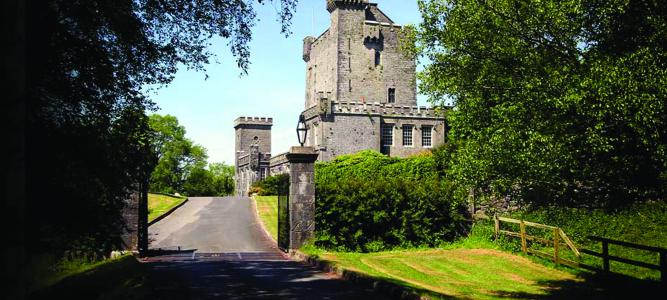Knappogue Castle was built in 1467 by Sean MacNamara, and is a magnificent example of a medieval tower house. It has a long and varied history from a battle field to a dwelling place. In 1571 the Castle became the seat of the MacNamara Clan, Earls of West Clancullen. Donagh MacNamara was a leader of the 1641 rebellion and Knappogue remained in MacNamara hands until 1659 when it was confiscated by Cromwell’s parliament and granted to a ‘Roundhead’, Arthur Smith. However after the monarchy was restored in 1670 Knappogue was returned to its MacNamara owners.
History & Restoration of Knappogue Castle:
The MacNamara Clan sold the castle to the Scotts in 1800 and they carried out major restoration and extension work. In 1855, it was acquired by Lord Dunboyne who continued the restoration work. In the early 20th century it served as the headquarters of General Michael Brennan and Irish Free State Army in Ireland's fight for freedom.
In the 1920's Knappogue passed into the hands of a local farmer and fell into disrepair. It was purchased in 1966 by the Hon. Mark Edwin Andrews of Houston Texas. He and his wife (a prominent American architect), in collaboration with Shannon Development, carried out an extensive and sensitive restoration returning the Castle to its former 15th Century glory while encompassing and retaining later additions which are a testament to the continuous occupation of the Castle. Since then it has been the host to two Irish presidents, as well as other heads of state, including General de Gaulle.
The Andrews were the last occupants of the Castle. Shannon Development purchased the Castle in 1996 with the intention of preserving this important building for future generations.
Knappogue Walled Garden:
The beautiful garden lies a short distance to the North West of the castle. There is an imposing arched cart entrance carrying a keystone inscribed 1817, which would appear to date the garden was created. The tall and imposing walls of the garden are just over 4 metres high; completely built of stone with no inner brick lining, they are now adorned with climbing roses, grapevines and fig trees. The north west, north east and south east corners of the wall are gently rounded, to facilitate the growing of fruit, which was a common feature of walled gardens of the late 18th and 19th century.
The Walled Garden today has been tenderly restored in the Victorian style. This is evidenced by the rectangular plots and system of paths, typical of the Victorian appreciation of order and symmetry.
Photography Credits:
Images supplied courtesy of Shannon Heritage
Want to See More Locations?
We have an extensive image database of locations within Limerick and the Mid-West region, some of which are featured on the website, as well as a private locations database. If you do not see a suitable location for your shoot, then please feel free to get in touch and we may be able to suggest some other locations that could suit what you are looking for.










